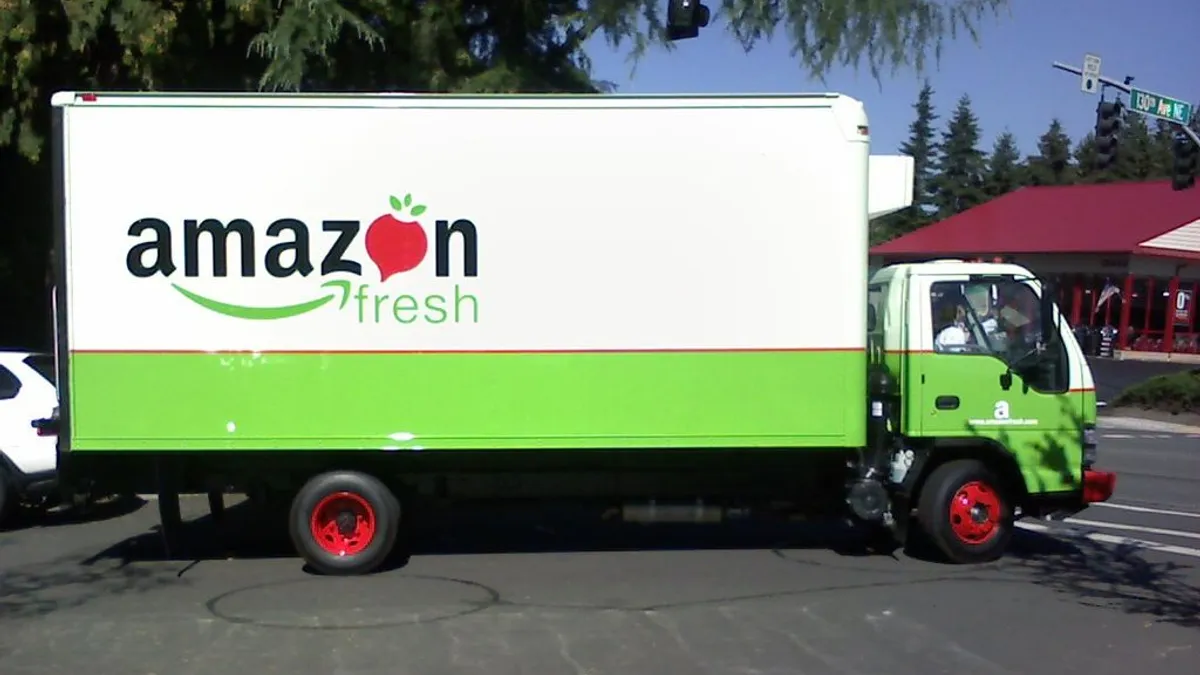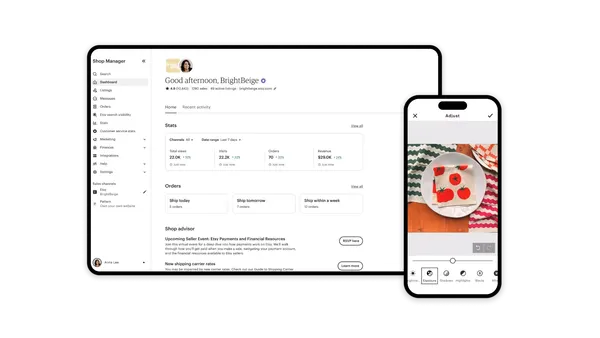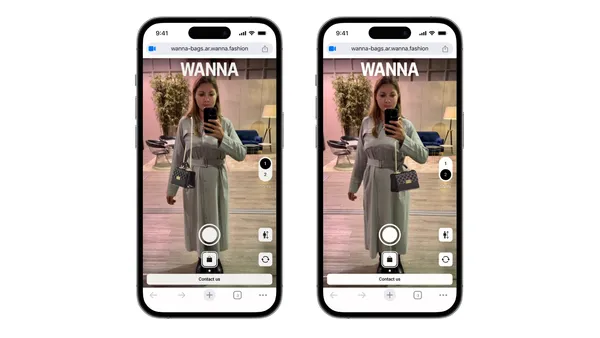Dive Brief:
- Amazon currently accounts for 30% of all online grocery spending in the U.S., according to a recent survey of 4,855 U.S. adults by consulting firm Brick Meets Click. No other retailer even comes close to this domination, as all other supermarkets combined make up another 30% while mass merchandisers claim 13%, other online retailers 11% and club retailers just 6%.
- Amazon's acquisition of Whole Foods has boosted its online grocery sales, according to BMC, with the grocer's home delivery, store pickup and private label sales through Amazon.com joining other services like Subscribe & Save, AmazonFresh, Prime Pantry and Prime Now.
- Still, Amazon has the potential to grow a lot more in the space. The survey revealed that only 11% of Amazon shoppers bought any groceries from the online retailer in the past month. And the average grocery order for an Amazon purchase is $45, while online supermarket bills average $116 per order.
Dive Insight:
Amazon has a clear lead in the online grocery wars, and the marketplace giant has shown no signs of slowing down as it expands services on its site and at Whole Foods stores.
Just over a year since Amazon acquired Whole Foods to get its start in brick-and-mortar grocery, the companies are quickly expanding home delivery services from stores. Last week, Amazon announced Whole Foods delivery in 10 new markets, bringing its total to 48 markets in the eight months since the service launched. Whole Foods stores are also offering store pickup in several markets, with more set to come online this year. Both home delivery and click-and-collect offer free service for Prime members — a powerful loyalty tool that connects Whole Foods to the broader Amazon ecosystem.
The combination of Amazon’s strength in fast, cheap delivery services and Whole Foods' brand recognition is daunting for competitors. Whole Foods stores and distribution centers also give Amazon all-important infrastructure to expand its other grocery offerings, including AmazonFresh. That service has struggled to grow, but with a collection of cold-chain facilities now available nationwide, it could come roaring back.
As Brick Meets Click notes, Amazon needs to expand its distribution of perishable goods in order to become a major online grocery player. The company sells a lot of groceries, but it's failing to build the large, profitable orders that many supermarkets are selling from their stores. Amazon also needs to boost its penetration in private label grocery, and it may have some work to do to streamline its many grocery services.
Traditional supermarkets like Kroger and Safeway will have to figure out faster and less expensive delivery options — something that Amazon is an expert at. At the same time, Brick Meets Click's David Bishop points out, supermarket operators need to focus on playing up their strongest asset — the in-store experience.
"Online retail is empowering consumers to shop in ways that work best for them. So, whether that’s shopping each week for household essentials or simply buying that hard-to-find item, the key for retailers is how to satisfy and capture as many of these trip types as possible,” David Bishop, partner at Brick Meets Click, told Grocery Dive in an email.














